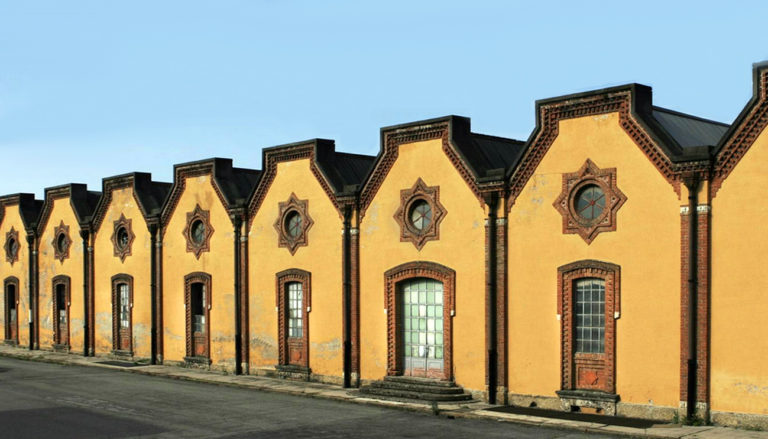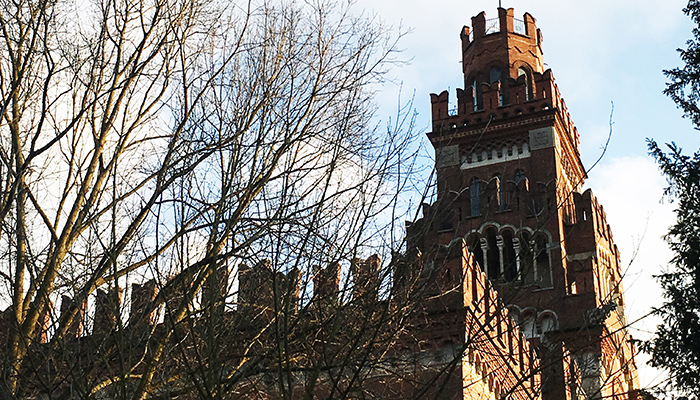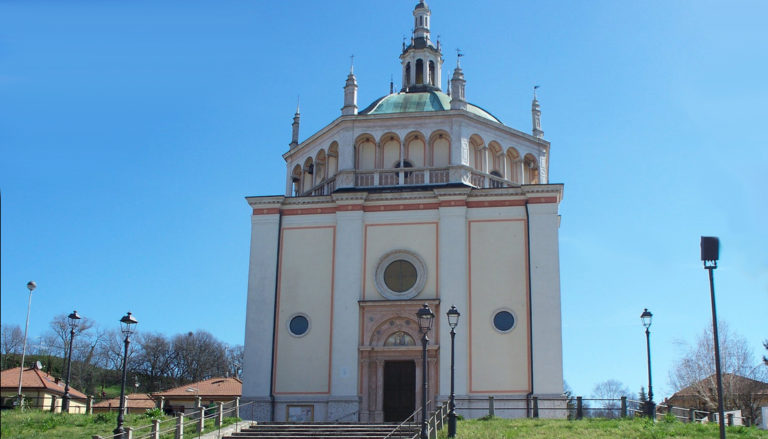
The company town of Crespi d’Adda, along the Adda river, was built from nothing in the late 19th century by the Crespi family (cotton manufacturers), by the owner of the factory for his workers and their families.
The Crespi Family lived in a Villa (a sort of Castel) and the idea was to give all the workers a cottage with a vegetable garden, and to furnish all the services necessary to their life: a church, a school, a hospital, a community centre, a theatre, public baths…
Founded in 1878, the factory has worked until 2003 in the cotton and textile sector and today the village is inhabited by a community which is mostly descending from the original workers.
The UNESCO Committee for the World Heritage entered Crespi d’Adda in the World Heritage List, as an “extraordinary example of the phenomenon of the worker’s villages, the most complete and best preserved of south Europe.”
FROM MILAN TO CRESPI D’ADDA
BY CAR from Milan
approx. 40 KM. – approx. 50 min. travelling
TANGENZIALE EST dir. Bergamo /AUTOSTRADA A4 Torino-Trieste dir. Bergamo
Capriate exit + indications to Crespi d’Adda 2,5 km
PUBLIC TRANSPORT FROM MILAN (35 km)
UNDERGOUND M2 (green) Gessate or Cologno Nord stops
or UNDEGROUND MM1 (red) Sesto S.G. stop
+ BUS directed to TREZZO d’ADDA , via BIFFI stop (near a bridge)
+ 20 minutes walking through Concesa village + little bridge on the river
MAP OF CRESPI D’ADDA
click to discover the Crespi d’Adda interactive Map
MAIN VIEWPOINTS
The Factory (outside)
The main entrance of the factory is the most memorable image of Crespi.
From the main street of the village the visitors can admire the wrought iron gate, the chimney and the directors’ offices : a superb architectural composition, which became symbol of industrial architecture from the late 1800s.
The factory of Crespi has got only one floor. The factory’s sheds are characterized by decorations made of terra cotta and bricks and create a fascinating row along the main street.

ph: SaeComunicazioneIntegrata

ph: SaeComunicazioneIntegrata
Owner’s Castle, Villas and Workers’ Houses (outside)
The villa of the Crespis reminds of an imposing medieval castle. It is settled near the river, at a very little distance from the village.
The series of cottages lined up in order represent the most typical image of Crespi Village. These cottages look simple but pleasant and were conceived as a modern solution for workers’ houses. by the examples of English workers’ houses.
During the twenties, the Crespi’s decided to build some villas with an eclectic style. These villas are beautiful, elegant and capricious, and were assigned to the directors and clerks.
THE FACILITIES
The Church : it is the exact copy of the Renaissance church (school of Bramante) in Busto Arsizio. The Crespi family wanted to recreate the same temple in their Village, as a reminder of their own town and of the Italian Renaissance.
The School : it was intended to be both a useful service for the growing population and a means for preparing future workers. The were also taught the skills that were required to be a worker.
The Community Centre : the workers could meet here after hard work in the factory. The centre included also a library and a bowling lawn.
The Wash House : it allowed the washer-women to wash their clothes near the houses, avoiding a long walk to the river carrying heavy baskets full of clothes.
The Cemetery : it lays at the end of the main street. It is characterised by the Crespi chapel. The eclectic-style monument rises to embrace the workers’ graves, small crosses disposed in order in the meadow.

ph: SaeComunicazioneIntegrata
HOW TO VISIT
The Village of Crespi is still inhabited. There are no formal entrances or opening hours
The Village of Crespi can be visited either with a guide or on your own: in either case, please behave respectfully towards its inhabitants and monuments.
From March to November, visitors must leave their cars in a car park (approx. 1 km from the Village)
GUIDED VISITS
in english by reservation only
CONTACT: “Crespi Cultura” Offices – piazzale Vittorio Veneto 1, Crespi d’Adda in Capriate (BG)
opening hours: monday-friday 9:00 a.m. -12:30; saturday and sunday 10:00 a.m. -12:30
Ph +39.02.90987191 – info@villaggiocrespi.it
WEB: www.villaggiocrespi.it